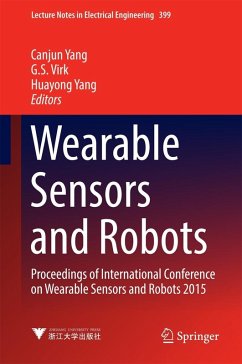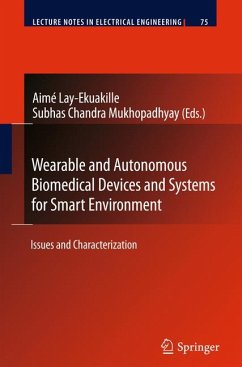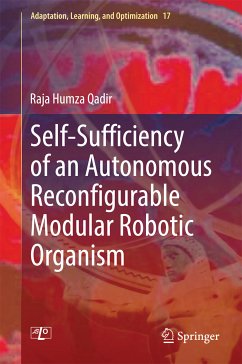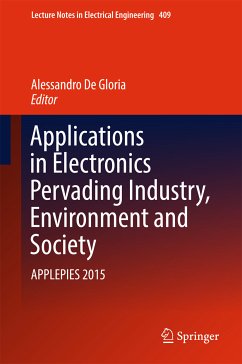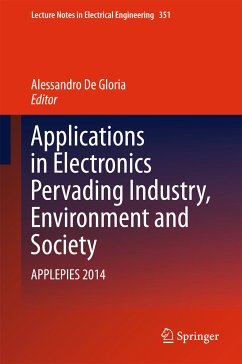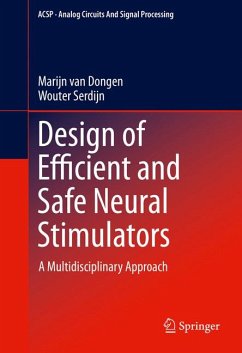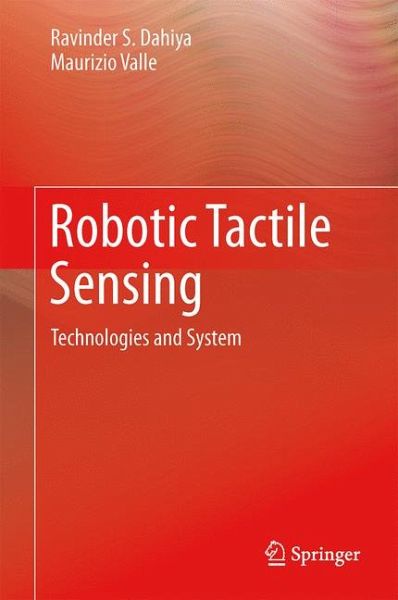
Robotic Tactile Sensing (eBook, PDF)
Technologies and System
Versandkostenfrei!
Sofort per Download lieferbar
88,95 €
inkl. MwSt.
Weitere Ausgaben:

PAYBACK Punkte
44 °P sammeln!
Future robots are expected to work closely and interact safely with real-world objects and humans alike. Sense of touch is important in this context, as it helps estimate properties such as shape, texture, hardness, material type and many more; provides action related information, such as slip detection; and helps carrying out actions such as rolling an object between fingers without dropping it. This book presents an in-depth description of the solutions available for gathering tactile data, obtaining aforementioned tactile information from the data and effectively using the same in various r...
Future robots are expected to work closely and interact safely with real-world objects and humans alike. Sense of touch is important in this context, as it helps estimate properties such as shape, texture, hardness, material type and many more; provides action related information, such as slip detection; and helps carrying out actions such as rolling an object between fingers without dropping it. This book presents an in-depth description of the solutions available for gathering tactile data, obtaining aforementioned tactile information from the data and effectively using the same in various robotic tasks.
The efforts during last four decades or so have yielded a wide spectrum of tactile sensing technologies and engineered solutions for both intrinsic and extrinsic touch sensors. Nowadays, new materials and structures are being explored for obtaining robotic skin with physical features like bendable, conformable, and stretchable. Such features are important for covering various body parts of robots or 3D surfaces. Nonetheless, there exist many more hardware, software and application related issues that must be considered to make tactile sensing an effective component of future robotic platforms. This book presents an in-depth analysis of various system related issues and presents the trade-offs one may face while developing an effective tactile sensing system. For this purpose, human touch sensing has also been explored. The design hints coming out of the investigations into human sense of touch can be useful in improving the effectiveness of tactile sensory modality in robotics and other machines. Better integration of tactile sensors on a robot's body is prerequisite for the effective utilization of tactile data.
The concept of semiconductor devices based sensors is an interesting one, as it allows compact and fast tactile sensing systems with capabilities such as human-like spatio-temporal resolution. This book presents acomprehensive description of semiconductor devices based tactile sensing. In particular, novel Piezo Oxide Semiconductor Field Effect Transistor (POSFET) based approach for high resolution tactile sensing has been discussed in detail. Finally, the extension of semiconductors devices based sensors concept to large and flexile areas has been discussed for obtaining robotic or electronic skin.
With its multidisciplinary scope, this book is suitable for graduate students and researchers coming from diverse areas such robotics (bio-robots, humanoids, rehabilitation etc.), applied materials, humans touch sensing, electronics, microsystems, and instrumentation. To better explain the concepts the text is supported by large number of figures.
The efforts during last four decades or so have yielded a wide spectrum of tactile sensing technologies and engineered solutions for both intrinsic and extrinsic touch sensors. Nowadays, new materials and structures are being explored for obtaining robotic skin with physical features like bendable, conformable, and stretchable. Such features are important for covering various body parts of robots or 3D surfaces. Nonetheless, there exist many more hardware, software and application related issues that must be considered to make tactile sensing an effective component of future robotic platforms. This book presents an in-depth analysis of various system related issues and presents the trade-offs one may face while developing an effective tactile sensing system. For this purpose, human touch sensing has also been explored. The design hints coming out of the investigations into human sense of touch can be useful in improving the effectiveness of tactile sensory modality in robotics and other machines. Better integration of tactile sensors on a robot's body is prerequisite for the effective utilization of tactile data.
The concept of semiconductor devices based sensors is an interesting one, as it allows compact and fast tactile sensing systems with capabilities such as human-like spatio-temporal resolution. This book presents acomprehensive description of semiconductor devices based tactile sensing. In particular, novel Piezo Oxide Semiconductor Field Effect Transistor (POSFET) based approach for high resolution tactile sensing has been discussed in detail. Finally, the extension of semiconductors devices based sensors concept to large and flexile areas has been discussed for obtaining robotic or electronic skin.
With its multidisciplinary scope, this book is suitable for graduate students and researchers coming from diverse areas such robotics (bio-robots, humanoids, rehabilitation etc.), applied materials, humans touch sensing, electronics, microsystems, and instrumentation. To better explain the concepts the text is supported by large number of figures.
Dieser Download kann aus rechtlichen Gründen nur mit Rechnungsadresse in A, B, BG, CY, CZ, D, DK, EW, E, FIN, F, GR, HR, H, IRL, I, LT, L, LR, M, NL, PL, P, R, S, SLO, SK ausgeliefert werden.




